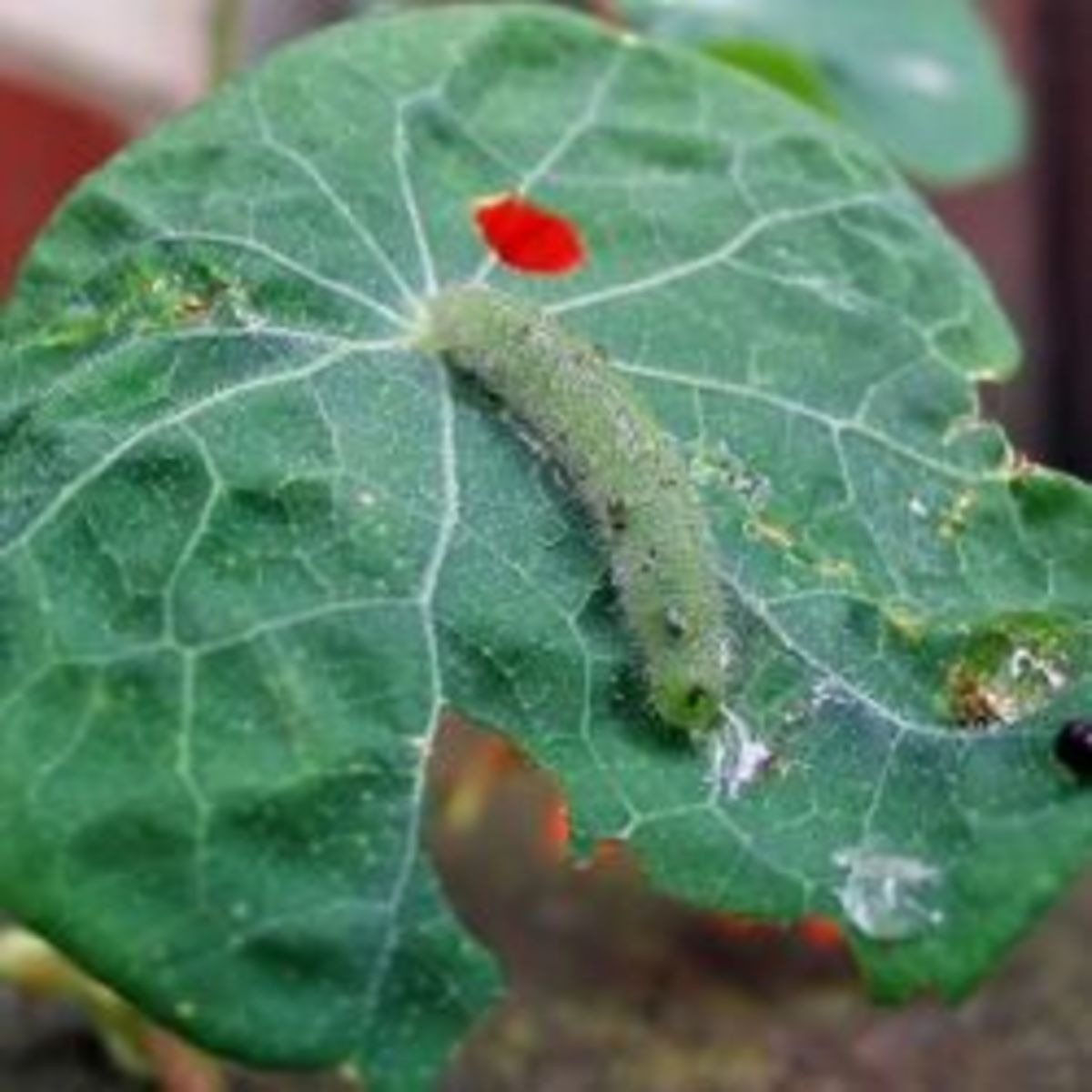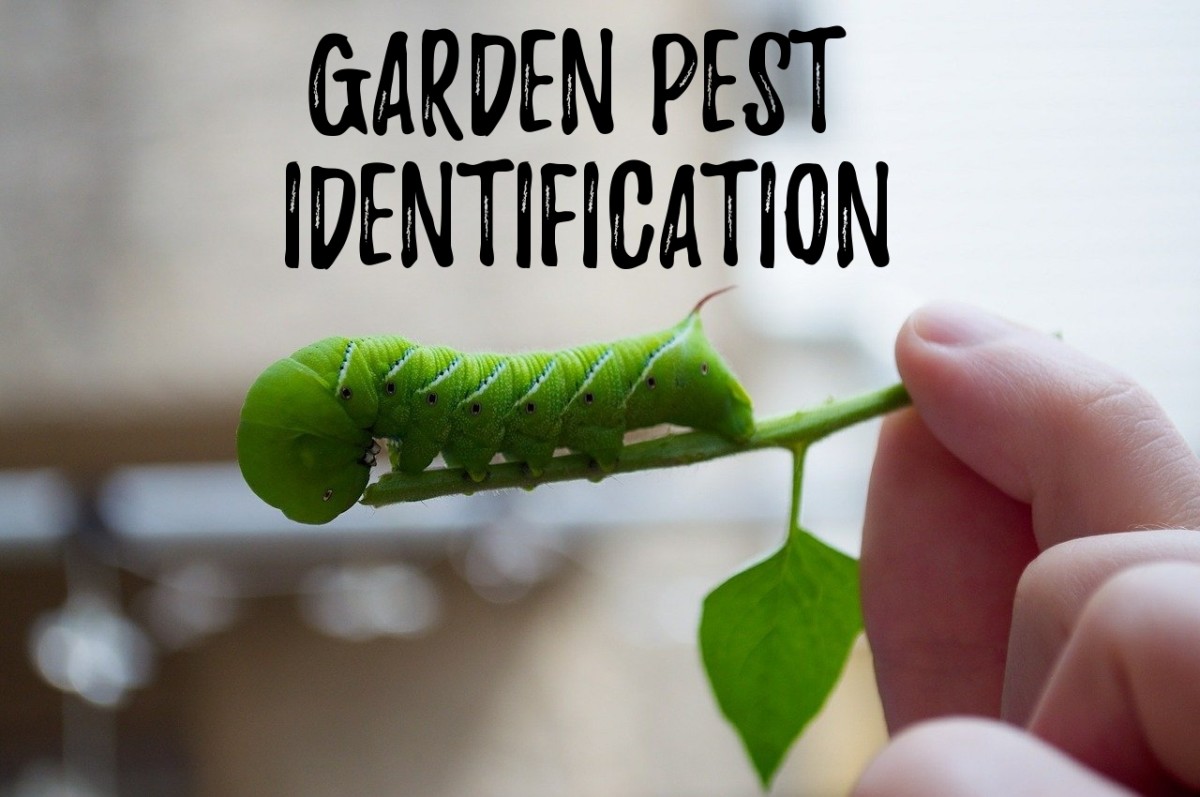Biological Control of the Diamond-Back Moth
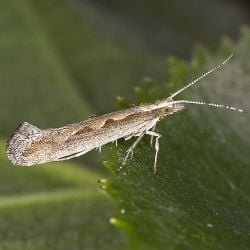
Controlling the diamond-back moth in an environmentally friendly way
Plutella xylostella (Order: Lepidoptera; Family: Yponomeuta), or diamond-back moth, is a pest on practically all crucifers. It is a small moth with a wingspan of 15-18 mm. Its fore-wings are narrow, while its hind-wings are fringed. At rest, the wings form a roof, while the long antennae point forwards.
The larvae are first yellowish, later greenish with a black head. They grow to up to 9 mm length and are sparsely covered with black hairs. The pupae are yellowish, turning brown later, and are enclosed in a loose, gauze-like cocoon.
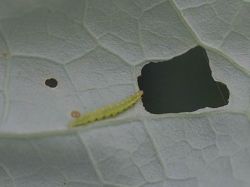
Biology of the diamond-back moth
At the end of May, the moths emerge from the pupae that overwintered on plant rests. They lay their minute, pale yellow eggs singly or in twos or threes on foliage. Newly hatched caterpillars feed as leaf miners, but later feed from the underside of leaves, scraping only the leaf surface.
Feeding of the mature caterpillars causes holes to appear. When the caterpillar is disturbed, it drops, attached to a silk thread, to climb up again some time later. When mature, in June, it spins a silky cocoon against the underside of a leaf, but sometimes to the upper side or the stem. The adults appear in July. Three to four generations occur each year.
A grown larva
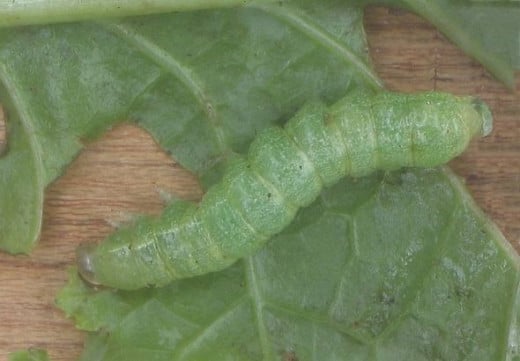
Damage by Plutella xylostella
This cosmopolitan moth is a pest on practically all crucifers, but most important on brassicas. Particularly vulnerable are young plants that can fail to develop properly with high infestation of caterpillars.
Natural enemies of the diamond-back moth
The moths and caterpillars are eaten by various birds, in particular sky larks, sparrows and finches. Caterpillars are also eaten by ground beetles (Order: Coleoptera; Family: Carabidae) and are attacked by parasitoid wasps, of which Diadegma insulare (Order: Hymenoptera; Family: Ichneumonidae) is the most efficient and, therefore, much used for biological control. Other important parasitoid wasps are Microplitis plutellae, Diadromis subtilicornis and Cotesia vestalis.
When the relative humidity is high, caterpillars and pupae can be attacked by fungi, such as Entomophtera.
A few links to articles on Diadegma insulare
- Featured creatures
A description, biology and use of Diadegma - Diadegma insulare | VegEdge
Biology and use of Diadegma and a way to rear this parasioid wasp
A caterpillar of the diamond-back moth is attacked by Cotesia vestalis, a parasitoid wasp
Treatment
- It is recommended to plant early in the season and to thin out properly. By the time that the caterpillars hatch, the plants are then large enough, so that major damage by feeding will be avoided.
- One could also set traps with sex pheromone to catch males, but these have little effect on the first generation in May/June.
- For biological control, especially in greenhouses, one could apply Bacillus thuringiensis that kills caterpillars, or Trichogramma spp. that parasitize eggs. Both can be purchased from biological control companies.

